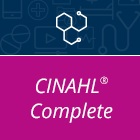Nursing & Health Sciences Research Journal
Assessment of a Pharmacist-Led Antibiotic Time-out for Transition of IV Vancomycin to Oral Linezolid
Abstract
Introduction: Intravenous (IV) vancomycin requires therapeutic drug monitoring and line placement and may prolong hospital stay. Linezolid requires less monitoring, is orally bioavailable, and may expedite transitions of care. This study assessed the impact of a pharmacist-led antibiotic timeout for the transition from IV vancomycin to oral linezolid. Methods: This single-center, quasi-experimental study included admitted adult patients receiving IV vancomycin for over 48 hours. Patients receiving vasopressors, of immunocompromised status, or with specific antibiotic indications were excluded. The primary outcome was the pharmacist intervention acceptance rate. Secondary outcomes included median hospital length of stay, median antibiotic treatment days, and incidence of adverse effects. Results: Of the 317 screened patients, 94 were eligible for the antibiotic time-out assessment, of which 66 met the criteria for oral linezolid. Of those meeting the criteria, 27 interventions were made, of which 20 (74%) were accepted. The median length of antibiotic treatment days was six days between both groups (p = .352). No differences in safety outcomes were observed. Discussion: A pharmacist-led antibiotic timeout for IV vancomycin to oral linezolid resulted in a high intervention acceptance rate and increased oral linezolid use without impacting safety outcomes. These results support the use of this strategy for antimicrobial stewardship. Conclusion: This study illustrates the impact of a pharmacist-led antibiotic timeout for the transition from IV vancomycin to oral linezolid therapy as an antimicrobial stewardship tool.
Recommended Citation
Vogel, M. S., Cua, J., Dittmar, E., Gauthier, T., & Williams, K. N. (2023). Assessment of a Pharmacist-Led Antibiotic Time-out for Transition of IV Vancomycin to Oral Linezolid. Nursing & Health Sciences Research Journal, 6(1), 25-33. https://doi.org/10.55481/2578-3750.1172
Creative Commons License

This work is licensed under a Creative Commons Attribution-NonCommercial-No Derivative Works 4.0 International License.
Included in
Interprofessional Education Commons, Nursing Commons, Pharmacy and Pharmaceutical Sciences Commons


